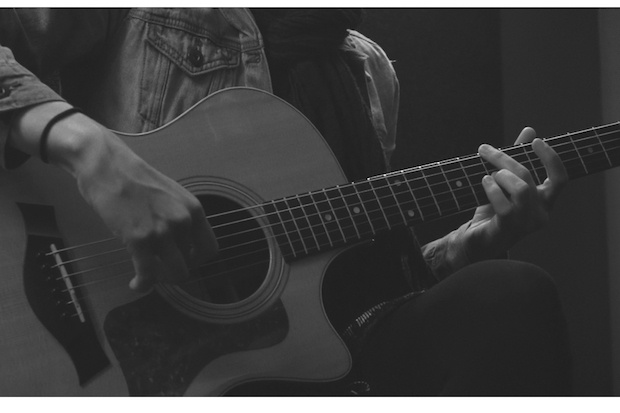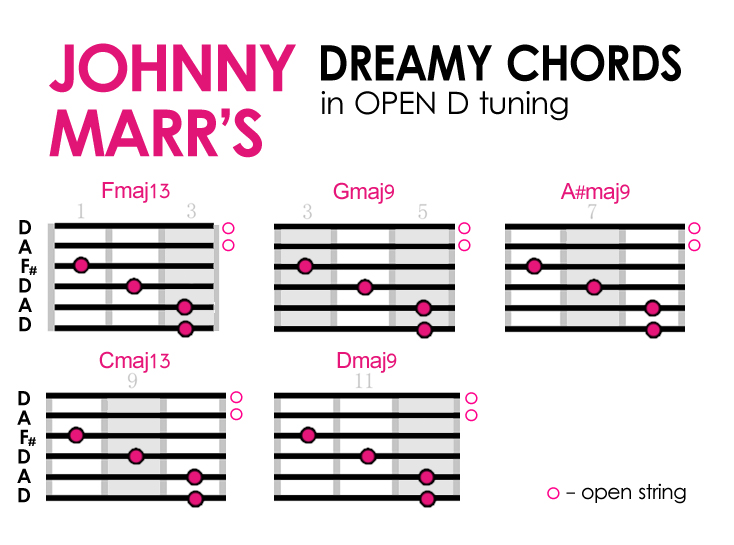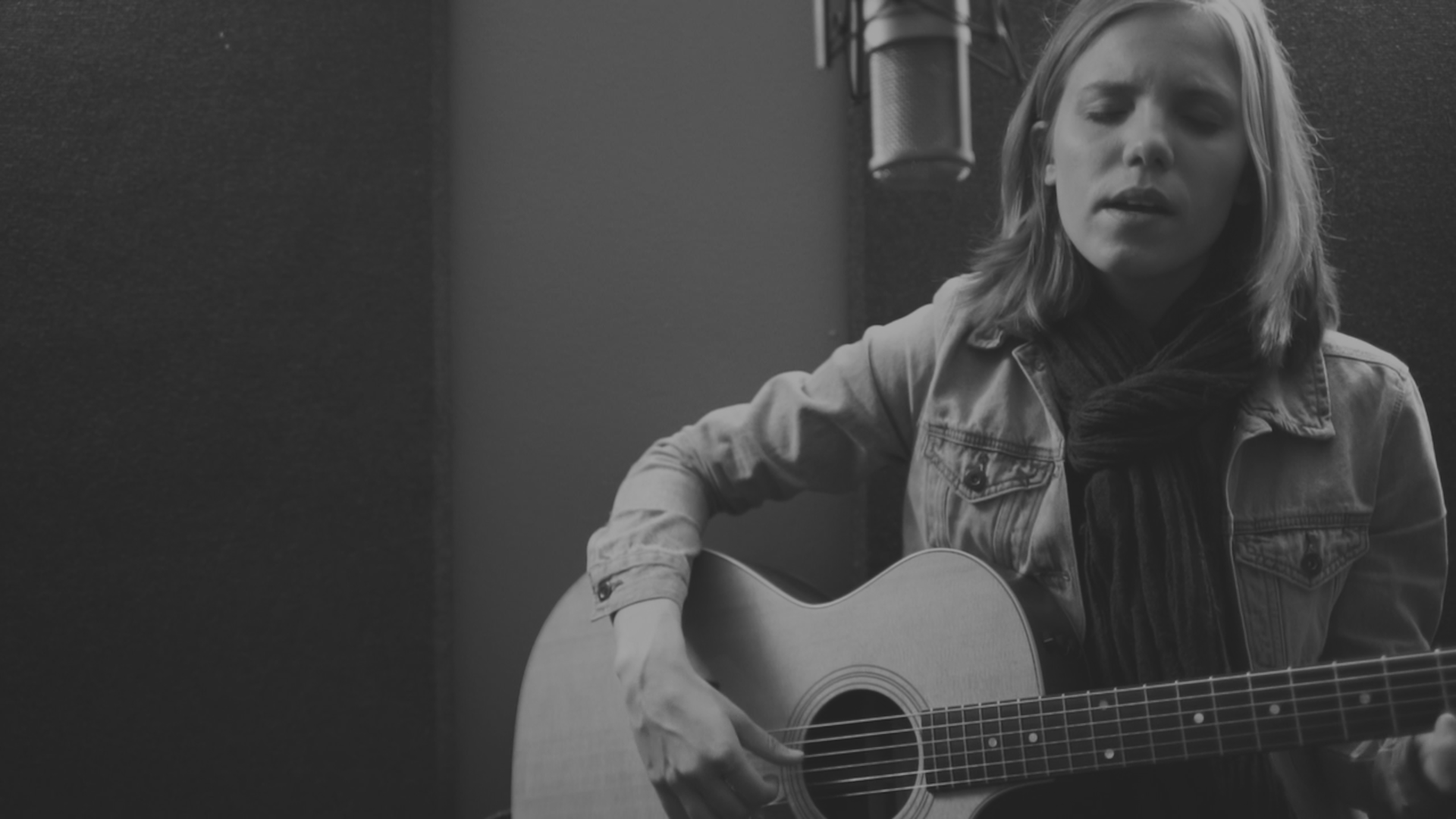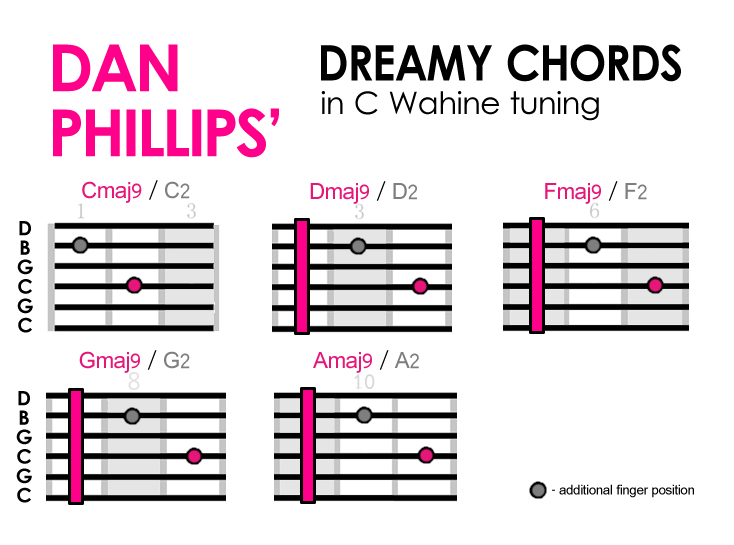 All images via flypaper.soundfly.com
All images via flypaper.soundfly.com
This article originally appeared on Soundfly.
Sometimes when I’m listening to a new band’s latest release or to an older album that I haven’t given a close ear to in a while, I’ll suddenly find myself trying to work out the chord changes. Every now and then, I’m surprised to realize that I can’t really locate these remarkable sounding chords on my fretboard.
Where are they? Well, it might be that the guitarist has used an alternative tuning. So let’s explore a few times this happened to me recently, and we’ll unpack the tunings and chords!
The last time this happened to me, I was listening to the album Meat Is Murder by the Smiths. Yes, it’s a well-known album, but I had never looked up the chords before, so a lot of the dreaminess was new to me! The album starts with a stunner called “The Headmaster Ritual,” which, as it turns out, is using the Open D tuning (which Soundfly just made a new, free online course about – sign up here!)
Open D
When you call it Open D, I guess it’s pretty self-explanatory. You tune some of the guitar strings down until the simple strumming of all six open strings together form a D-major chord. So if you start from standard tuning, E-A-D-G-B-E (from the lowest to the highest note), you tune both E strings (the lowest and highest ones) down to D, the G string down to F#, and B three half notes down to A. Now putting your pointer finger in any fret position across all of the strings, aka a barre chord (or bar chord), makes it super simple to play every other major chord.
Use this handy video to tune your guitar to Open D.
Now, I’d like to introduce you now to Johnny Marr’s beautiful chord pattern in “The Headmasters Ritual,” because it’s pretty blissful.

The graphics in this article assume you're a right-handed guitar player (with your left hand on the fretboard). Remember that in this graphic, the top string is the high D and the bottom string is the low D. Where there are empty pink circles, strum the open strings. Now that we’re in open D, those strings help to fill out the rest of the chords, and will make them sound even dreamier!
Note that in Johnny Marr’s chord changes, the fingering position never adjusts – it just moves up and down the fretboard, making for easy movement and fluid-sounding changes.
C Wahine
 A still from Soundfly's new, free course “Alternate Tunings for the Creative Guitarist: Open D”
A still from Soundfly's new, free course “Alternate Tunings for the Creative Guitarist: Open D”
There is another really special group of alternate tunings based on major seventh chords, known as the “Wahine” tunings. Wahine is the Hawaiian and Maori word for "woman," though it can be used to mean lots of things, like "female surfer" and "queen." And for me, this tuning group conjures the images of the feminine power and beauty that the name suggests. As I described in my previous article, “How to Create Dreamier Guitar Chords,” often a seventh (or ninth) note can open up a chord and help make it more beautiful and dreamy. Well… these tunings do the same thing!
I discovered how both dark and pretty the Wahine tuning could be while listening to the shoegazer stoner-rock band True Widow from Texas. In the song “Flat Black” below, guitarist Dan Phillips uses a C Wahine tuning, which is a slack key tuning, because tuning down a traditional guitar to C does make the strings kind of slack. See if you can notice just by listening first.
So, starting from E-A-D-G-B-E, tune down your lowest string to a C, the A string then needs to be tuned down to G. Your middle D, G, and B stay the way they are. Lastly, tune your high E string down to a deeper D and there you go! The result should be C-G-D-G-B-D.
Inspired by True Widow’s lovely/lazy song, here’s one easy way to get some nice chords out of this tuning. In every position after the first fret, you’ll need to play a full barre with your pointer finger, which can be demanding at first, but fight through the pain! It’s worth it!

Strumming all six open strings, the C Wahine tuning already intones an almost complete version of a C Major 9 chord. Now, put your ring finger on the second fret position of the D string, and the major ninth magic takes full effect. Additionally, you can lay your middle finger on the first fret position of the B string to create a marvelous strong-sounding C chord.
In higher fret positions, use your pointer finger to grab this pattern in a barre version and you’ll be able to pitch the chord to D Major 9, F Major 9, or G Major 9 like Dan Phillips did so perfectly in True Widow’s “Flat Black.” Experiment with the open areas of the other strings with your unused middle, ring, and pinky fingers. There are many more possibilities to bring an exciting variety of harmonics, chords, and colors to your playing in C Wahine.
In the end, as I always say, I think it’s useful to just be creative and try a ton of finger positions with these new tunings. And, who knows, maybe you’ll be the next inspiration for young, passionate songwriters everywhere! In fact, if you have songs written in alternate tunings, feel free to share them in the comments below!
Keep on dreaming.
Kenneth Estrada y Santiago is a songwriter, musician, and design artist, based in Berlin, Germany. He currently sings and plays bass in his band Downhill Willows, is CEO of the Berlin indie production company Pitchbox, and writes for the Berlin Shoegazer.







